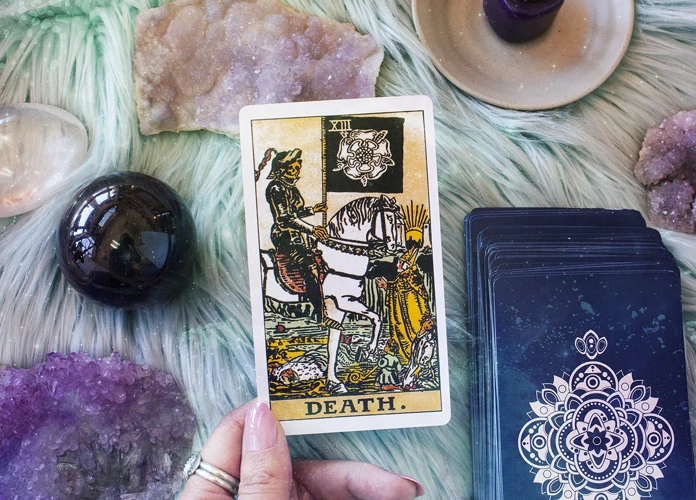Tarot cards have long been a source of fascination and intrigue, offering insights into the past, present, and future. One aspect that often causes confusion among tarot enthusiasts is the interpretation of reversed cards. Many myths and misconceptions surround the meaning and significance of reversed tarot cards, leaving people unsure of how to interpret them. In this article, we will debunk these common myths step by step, providing a clear understanding of the true nature of reversed tarot cards. By the end, you’ll have the knowledge and confidence to embrace the insights that reversed cards can offer in your tarot readings. So, let’s dive in and unravel the mysteries together!
Contents
- Myth 1: Reversed Tarot Cards Are Always Negative
- Myth 2: Reversed Cards Should Be Ignored
- Myth 3: Reversed Cards Indicate Bad Luck or Misfortune
- Myth 4: Reversed Cards Have the Opposite Meaning
- Myth 5: Reversed Cards Always Represent Blocks or Obstacles
- Myth 6: Reversed Cards Are Less Significant
- Myth 7: Reversed Cards Only Occur in Inaccurate Readings
- Conclusion
-
Frequently Asked Questions
- FAQ 1: Are there any positive meanings for reversed tarot cards?
- FAQ 2: Should I always pay attention to reversed cards in a tarot reading?
- FAQ 3: Can reversed tarot cards indicate a reversed outcome?
- FAQ 4: How should I interpret a reversed card in a career or finance reading?
- FAQ 5: Can reversed tarot cards predict future events?
- FAQ 6: Are reversed tarot cards more powerful or significant than upright cards?
- FAQ 7: Can reversed cards indicate positive changes or breakthroughs?
- FAQ 8: Do reversed cards always have the opposite meaning of upright cards?
- FAQ 9: Can reversed tarot cards indicate hidden or unconscious influences?
- FAQ 10: Can reversed cards offer guidance even in accurate tarot readings?
- References
Myth 1: Reversed Tarot Cards Are Always Negative
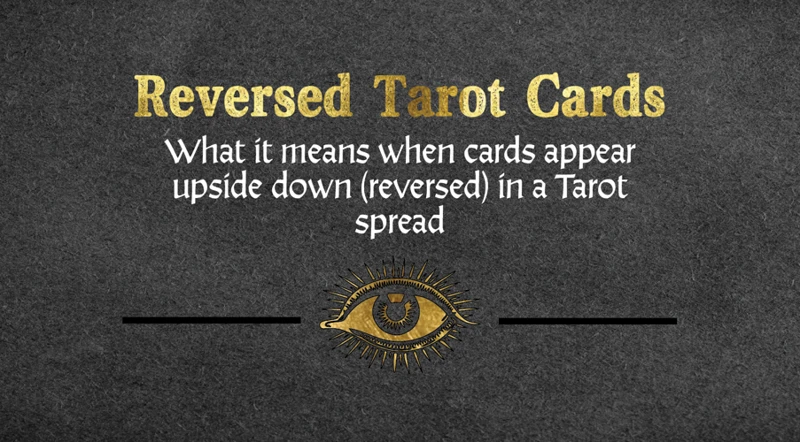
There is a widespread myth surrounding reversed tarot cards that suggests they are always negative. This belief stems from the assumption that a card in an inverted position must signify a negative outcome or energy. However, this is far from the truth. Reversed tarot cards actually offer a deeper and nuanced perspective to a reading, adding layers of complexity and alternate interpretations. While some reversed cards may indicate challenges or obstacles, they can also signal growth, introspection, or hidden opportunities. It is crucial to consider the surrounding cards, the question being asked, and the specific symbolism within each card to accurately interpret the meaning. By embracing the duality of reversed tarot cards and exploring their potential, you can gain valuable insights and expand your understanding of the tarot. Remember, there is much to discover beyond the surface level interpretations.
Explanation of the Myth
The myth that reversed tarot cards are always negative stems from a misunderstanding about the meaning and purpose of these cards. When a tarot card is reversed, it simply means that it appears upside down in a reading. This physical orientation is not inherently positive or negative on its own. However, people often assume that anything “upside down” must indicate something negative or unfavorable. This belief is compounded by the association of upright cards with positive outcomes, leading to the misconception that reversed cards must be the opposite.
In reality, the interpretation of a reversed card largely depends on the context of the reading and the specific card itself. Reversed cards often offer a different perspective, highlighting hidden aspects, subconscious influences, or blocked energy. They can provide valuable insights into areas that may require attention, self-reflection, or a shift in perspective. For example, a reversed card representing love may indicate the need for self-love or healing before engaging in a new relationship.
To truly understand the meaning of a reversed tarot card, it is essential to consider the surrounding cards, the question being asked, and the intuitive connection between the reader and the cards. Exploring the spiritual and symbolic significance of reversed cards can also deepen your understanding and provide a more nuanced interpretation. By approaching reversed cards with an open mind and embracing the potential for growth and self-discovery, you can debunk the myth that they are always negative and unlock their true transformative power. If you’re interested in delving deeper into the world of reversed tarot cards, you can explore more about their spiritual significance here.
Debunking the Myth
Debunking the myth that reversed tarot cards are always negative is essential for a comprehensive understanding of the tarot. To unravel this misconception, it is important to approach reversed cards with an open mind and recognize their potential for diverse interpretations. Reversed cards offer unique insights and can indicate a range of meanings, including challenges, personal growth, or hidden opportunities. Rather than automatically assuming negativity, it is crucial to consider the context of the reading, the specific card symbolism, and the surrounding cards. For example, the reversed card could signify the need for caution or a different perspective, rather than outright negativity. By exploring the various meanings and nuances attached to reversed tarot cards, we can unlock a deeper level of understanding and uncover hidden messages within the readings. To learn more about interpreting reversed cards, check out our guide on exploring reversed card meanings in tarot.
Myth 2: Reversed Cards Should Be Ignored
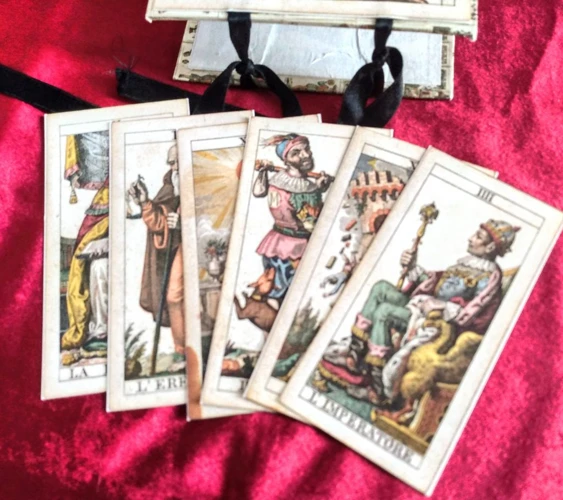
Another common myth surrounding reversed tarot cards is the belief that they should be ignored during a reading. Some tarot practitioners argue that only upright cards hold significance and that reversed cards are mere anomalies or mistakes. However, dismissing reversed cards would mean missing out on a wealth of valuable information and insights. Reversed cards offer a unique perspective, suggesting a need for reflection, caution, or a shift in energy. They can provide valuable guidance in various aspects of life, including career and finance. For instance, a reversed card in a career or finance reading might indicate a need for reassessment, a warning against impulsive decisions, or the presence of hidden obstacles that need to be addressed. By embracing the full spectrum of tarot card orientations, including reversed cards, we can unlock a deeper understanding of the messages and guidance the cards have to offer. So, next time you sit down for a tarot reading, give due attention to the reversed cards and explore their meaningful interpretations to gain a fuller picture of the situation at hand.
Explanation of the Myth
The myth that reversed tarot cards are always negative can be attributed to a few factors. Firstly, the visual cue of a card being inverted can create a sense of imbalance or disruption, leading people to assume a negative connotation. Additionally, cultural interpretations of “upright” being the preferred or positive position further reinforce this misconception. Some tarot readers who prefer traditional interpretations may have perpetuated this belief by assigning predominantly negative meanings to reversed cards. However, it is important to note that the meaning of a reversed card is not inherently negative. Reversed cards offer an opportunity for deeper exploration and provide alternative perspectives in a reading. They can indicate subtle shifts, challenges that need to be addressed, or hidden opportunities that may not be as apparent in an upright card position. Instead of immediately jumping to negative assumptions, it is essential to approach reversed cards with an open mind and consider the contextual factors influencing the interpretation. By understanding the myth’s origins and challenging the assumption that reversed cards are always negative, one can embrace the full range of possibilities that tarot readings offer, including enhanced insights into career and finance situations. To learn more about interpreting reversed cards in career and finance tarot readings, click here.
Debunking the Myth
Debunking the Myth:
1. Reversed tarot cards do not always bring negative energy. Each card holds a spectrum of meanings, and the interpretation of a reversed card depends on various factors such as the context of the reading, the question being asked, and the surrounding cards. While some reversed cards may indicate challenges or obstacles, they can also represent opportunities for growth and self-reflection.
2. Reversed cards offer a different perspective and can provide valuable insights. When a card is reversed, its energy is modified or emphasized in some way. This shift in energy can uncover hidden aspects, invite introspection, or highlight a need for personal growth. By embracing the duality of tarot, we can gain deeper understandings of ourselves and our situations.
3. Reversed cards are not inherently negative or less significant than upright cards. They simply reflect a different aspect of the card’s meaning. In fact, reversed cards can often bring important messages and shed light on underlying influences that may otherwise go unnoticed.
4. The interpretation of reversed tarot cards should involve intuition, symbolism, and personal connection. It is essential to trust your instincts and rely on your understanding of the cards rather than adhering solely to rigid interpretations. The meanings of reversed cards can vary from deck to deck and reader to reader, so it is important to develop your own relationship with the cards and trust your intuition when interpreting them.
By demystifying the myth that reversed tarot cards are always negative, we open ourselves up to a broader range of interpretations and insights. Embracing the presence of reversed cards in readings allows for a more holistic and nuanced understanding of the tarot, ultimately elevating the quality and depth of our readings. So, let go of the misconception, embrace the complexity, and explore the rich symbolism and messages that reversed tarot cards have to offer.
Myth 3: Reversed Cards Indicate Bad Luck or Misfortune
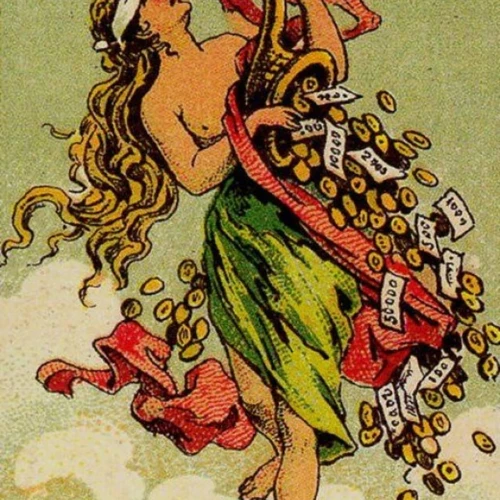
A commonly held myth surrounding reversed tarot cards is that they always indicate bad luck or misfortune. This misconception can create fear and anxiety when these cards appear in a reading. However, it is important to understand that reversed cards do not solely signify negative outcomes. In fact, they often represent a shift in energy or a need for introspection. Reversed cards prompt us to examine our own beliefs, patterns, and behaviors, offering an opportunity for personal growth and transformation. While some reversed cards may indicate challenges or setbacks, they should not be immediately associated with doom and gloom. It is essential to approach reversed cards with an open mind and a willingness to explore their deeper meanings. By doing so, you can unlock valuable insights and navigate the complexities of life with confidence and resilience.
Explanation of the Myth
The myth that reversed tarot cards are always negative stems from a misunderstanding of their purpose and significance. This misconception arises from a simplistic belief that a reversed card signifies the opposite or a diminished version of its upright meaning. However, tarot is a complex and nuanced system that goes beyond such binary interpretations. Reversed cards are not inherently negative; they offer a different perspective, providing additional layers of insight and highlighting subtleties that may be overlooked in upright cards. When a card appears in reverse, it invites us to delve deeper into its symbolism and explore its hidden meanings. It encourages us to consider alternative possibilities, challenges us to look inward, or warns us of potential obstacles on our path. The explanation of this myth lies in the oversimplification of the tarot’s rich symbolism and the failure to recognize the depth of interpretation that reversed cards can offer. By dismissing reversed cards as purely negative, we miss out on valuable insights and restrict our understanding of the tarot’s profound wisdom.
Debunking the Myth
Debunking the Myth:
1. Reversed tarot cards are not always negative: The belief that reversed tarot cards always carry a negative connotation is a misconception. While some reversed cards may indicate challenges or obstacles, they can also represent hidden opportunities, personal growth, or a shift in energy. The interpretation of a reversed card depends on various factors, such as the surrounding cards, the question being asked, and the specific symbolism within the card itself.
2. Reversed cards offer a different perspective: Reversed tarot cards provide a unique and nuanced perspective to a reading. They encourage deeper introspection and exploration of subconscious thoughts, emotions, and motivations. Instead of viewing reversed cards as inherently negative, they should be seen as a valuable tool for uncovering hidden aspects and gaining a more holistic understanding of the situation at hand.
3. Reversed cards can indicate subtle influences: In a tarot reading, reversed cards can often represent subtle influences that may be affecting the situation. These influences might be internal, such as unresolved emotions or conflicting desires, or external, such as outside forces impacting the situation. Paying attention to reversed cards can help shed light on these underlying influences and provide valuable insights into the overall outcome.
4. Reversed cards can deepen the interpretation: Interpreting reversed tarot cards adds layers of depth and complexity to a reading. They can highlight areas that require attention, suggest a need for course correction, or indicate areas of potential growth. Ignoring reversed cards means missing out on crucial information that could significantly impact the overall message of the reading.
5. Reversed cards should be considered in context: It is essential to consider the context of the reading when interpreting reversed tarot cards. Each card has its own unique symbolism and meaning, and when combined with the context of the reading, a more accurate interpretation can be achieved. Avoid making generalizations about reversed cards and instead focus on the specific details and associations present in the reading.
By debunking the myth that reversed tarot cards are always negative, we open ourselves up to a more nuanced and comprehensive understanding of their significance. Through careful consideration and interpretation, reversed cards can provide valuable insights and guidance on our life’s journey. So, let go of the misconception and embrace the hidden wisdom that reversed tarot cards have to offer.
Myth 4: Reversed Cards Have the Opposite Meaning
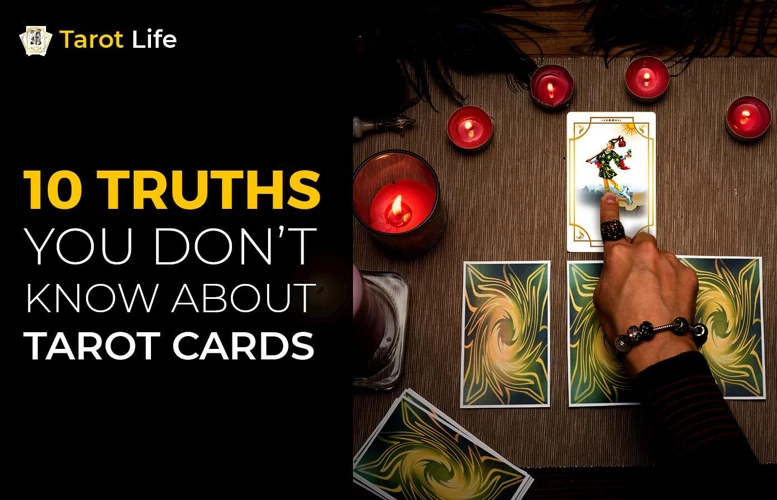
Another common myth surrounding reversed tarot cards is the belief that they always have the opposite meaning of their upright counterparts. This oversimplification can lead to misinterpretations and a limited understanding of the cards. The truth is that reversed cards often offer subtle shifts in meaning or different aspects to consider. Rather than simply flipping the meaning on its head, reversed cards invite us to explore different perspectives, hidden influences, or unresolved internal conflicts. For example, a reversed card may indicate a need for introspection, a warning to proceed with caution, or a call to pay attention to inner emotions. It is important to approach reversed cards with an open mind and consider the unique symbolism, context, and intuitive insights they bring to the reading. So, don’t be deceived by the notion of complete opposition – embrace the complexity and depth that reversed cards can provide.
Explanation of the Myth
The myth that reversed tarot cards are always negative can be explained by a few factors. One reason is the traditional association of upright cards as representing positive outcomes and reversed cards as suggesting the opposite. This binary interpretation overlooks the inherent duality present in tarot symbolism. Another factor is that people tend to focus on the potential challenges or difficulties indicated by reversed cards, rather than considering the deeper meanings they can convey. Additionally, individuals may have had personal experiences where reversed cards coincided with unfavorable circumstances, reinforcing the belief that all reversed cards are inherently negative.
Popular culture and media portrayals often perpetuate the idea that reversed cards are bad omens or indicators of misfortune. This portrayal can contribute to the misconception that reversed cards should be feared or ignored in readings. However, it is important to approach tarot with an open mind and recognize that the meanings of reversed cards are not inherently negative.
To truly understand the significance of reversed cards, it is crucial to delve into the rich symbolism and interpret them within the context of the reading. Reversed cards can signify a range of possibilities, including challenges to overcome, hidden opportunities, alternative perspectives, or the need for introspection and reflection. They can invite the reader to explore the nuances and complexities of a situation, providing valuable insights that may be overlooked with a narrow focus on upright cards alone.
By acknowledging and challenging the myth that reversed tarot cards are always negative, we can unlock a deeper understanding and appreciation for their role in readings. Embracing the potential of reversed cards allows for a more comprehensive and insightful tarot experience, enabling us to tap into the full spectrum of meanings and messages offered by the tarot deck. So, let go of preconceived notions and approach reversed cards with curiosity and an open mind – you may be pleasantly surprised by the profound wisdom they hold.
Debunking the Myth
To debunk the myth that reversed tarot cards are always negative, we need to understand that the meaning of a reversed card is not inherently negative. It is crucial to approach reversed cards with an open mind and a willingness to explore their deeper meanings. Here are a few key points to consider:
1. Dual Perspectives: Reversed cards offer a different perspective or a shift in energy compared to upright cards. They might indicate an internal or hidden aspect of a situation, highlighting the need for self-reflection or a change in approach. Instead of automatically assuming negativity, we should view reversed cards as an opportunity to gain fresh insights and new perspectives.
2. Context is Key: The meaning of a reversed card heavily depends on its surrounding cards and the specific question or situation being addressed. Each card in a tarot reading works together to provide a comprehensive message. When interpreting a reversed card, consider the overall theme, the positions of other cards, and the querent’s energy to gain a more accurate understanding.
3. Symbolism and Intuition: Pay attention to the symbolism within the card itself. Sometimes, the reversed position may enhance or alter the symbolism, leading to a unique interpretation. Trust your intuition and the messages that resonate with you as you explore the reversed card’s meaning. Combining traditional interpretations with personal insights can provide a rich and layered understanding of the card.
4. Positive Aspects: Reversed cards aren’t always negative; they can highlight positive aspects as well. For example, a reversed card might suggest breaking free from negative patterns, overcoming obstacles, or embracing personal growth. By recognizing the potential for positive transformation, we can approach reversed cards with optimism and curiosity.
Remember, the interpretation of reversed tarot cards is not fixed or standardized. It is a personal and intuitive process that requires an open mind and a willingness to explore different possibilities. By disregarding the assumption that reversed cards are universally negative, we can unlock their full potential and deepen our understanding of the tarot.
Myth 5: Reversed Cards Always Represent Blocks or Obstacles
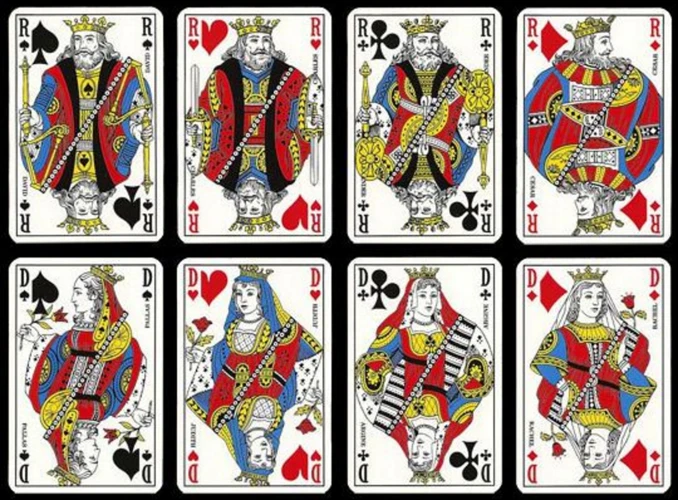
One prevailing myth surrounding reversed tarot cards is the belief that they always represent blocks or obstacles. While it is true that reversed cards can indicate challenges or delays, it is important to recognize that they hold a wider range of meanings. Reversed cards can often signify a need for introspection, a shift in perspective, or a call to explore different approaches. They can also suggest hidden opportunities or the need to break free from limitations. Each card carries its own unique symbolism, and when in a reversed position, its energy can be altered or intensified. By embracing the full spectrum of meanings associated with reversed tarot cards, you can unlock a deeper level of insight and wisdom in your readings. So, rather than solely viewing reversed cards as obstacles, consider them as invitations to navigate through life’s complexities with curiosity and open-mindedness.
Explanation of the Myth
The myth that reversed tarot cards are always negative has its roots in a common misconception. It is easy to assume that an inverted card represents the opposite of its upright meaning, leading to the belief that the reversed position automatically denotes negativity. However, this oversimplification fails to capture the intricacies and nuances of tarot card interpretations. The truth is that reversed cards offer a more nuanced and complex perspective. Rather than solely representing negative outcomes, they provide an alternative viewpoint or highlight hidden aspects of the situation at hand. Reversed cards encourage us to delve deeper into the symbolism and energies associated with the card, uncovering different layers of meaning. It is important to remember that the interpretation of reversed cards varies depending on the specific card, surrounding cards, and the question being asked. Each reversed card carries its unique message, which can range from challenges and obstacles to opportunities for growth and self-reflection. It is vital to approach reversed cards with an open mind and a willingness to explore their deeper meanings rather than assuming they are uniformly negative. By doing so, we can unlock a wealth of insight and expand our understanding of the tarot.
Debunking the Myth
Debunking the Myth:
To debunk the myth that reversed tarot cards are always negative, it is important to understand that the meaning of a reversed card is not inherently negative. In fact, the interpretation of a reversed card can vary depending on the specific card and its surrounding context. Rather than viewing reversals as purely negative, it is helpful to consider them as invitations to explore alternative perspectives or hidden aspects of a situation.
One approach to debunking this myth is to examine the traditional meanings associated with specific reversed cards. Each tarot card has its own unique symbolism and energy, and when a card is reversed, it may suggest a deviation from its upright interpretation. For example, a reversed Justice card could indicate imbalance or a need for realignment, rather than solely representing injustice or unfairness. By studying and familiarizing yourself with the individual meanings of reversed cards, you can unveil a more nuanced and accurate understanding of their implications.
Another way to debunk this myth is by carefully analyzing the surrounding cards in a spread. The combination of upright and reversed cards within a reading can provide valuable insights. Sometimes, a reversed card may serve as a warning or a reminder to pay attention to a particular aspect of the reading. It could signify a call for introspection or a need to approach a situation from a different angle. By considering the overall message and narrative woven by the cards, you can gain a more holistic understanding of their collective meaning.
It is also worth mentioning that interpreting reversed cards is influenced by personal intuition and connection. The energy and symbolism of a card can resonate differently for each individual. It is crucial to trust your instincts and develop your own personal relationship with the tarot deck. By tapping into your intuition and innate wisdom, you can decipher the true meaning and significance of reversed cards in your readings.
Debunking the myth that reversed tarot cards are always negative requires an open-minded and nuanced approach. By delving into the individual meanings, considering the context of the surrounding cards, and trusting your intuition, you can unlock the vast potential and rich symbolism of reversed tarot cards. Embrace the opportunity to explore the depths and complexities of the tarot, and you will discover a whole new realm of insight and guidance.
Myth 6: Reversed Cards Are Less Significant
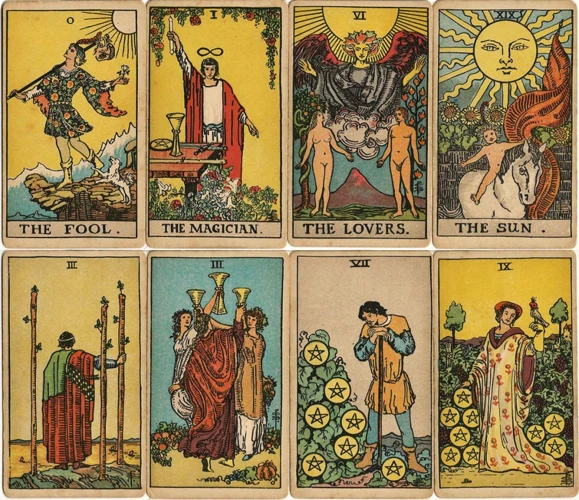
Another common myth surrounding reversed tarot cards is the belief that they are less significant or important compared to upright cards. This misconception often leads to disregarding or downplaying the messages conveyed by reversed cards in a reading. However, it is essential to understand that reversed cards hold equal weight and significance as their upright counterparts. Reversed cards offer a unique perspective, highlighting areas of inner growth, unresolved issues, or hidden influences. They provide valuable insights into the subconscious mind and bring attention to aspects that may need attention or adjustment. Ignoring the messages of reversed cards means missing out on a holistic understanding of a tarot reading. By acknowledging and interpreting reversed cards with the same level of attention, you open yourself up to a comprehensive and insightful tarot experience. So, embrace the reversed cards and unlock the deeper layers of wisdom they hold within.
Explanation of the Myth
The myth that reversed tarot cards are always negative stems from a misunderstanding of their purpose and interpretation. Some people believe that because a card is upside down or in a reversed position, it automatically implies a negative outcome. This misconception overlooks the complexity and depth of tarot symbolism. Reversed cards actually offer a different perspective or a subtle shift in the card’s energy. They invite us to explore hidden meanings, underlying emotions, or potential challenges that may need attention.
When a tarot card is reversed, it does not necessarily indicate a completely negative outcome. Instead, it encourages us to delve deeper into the situation and consider alternative possibilities. It may signify the need for introspection, a warning of potential obstacles, or a call to approach the situation in a different way. Reversed cards can also shed light on subconscious influences, unresolved issues, or unhealed aspects that need attention.
It’s important to note that the interpretation of reversed cards can vary depending on the specific card, the question asked, and the surrounding cards in a reading. Each card has its own individual symbolism, which may change or be enhanced when it appears in a reversed position. This adds layers of complexity and depth to the reading, highlighting the intricate nature of the tarot.
To truly understand the meaning of a reversed card, it is essential to consider the context and trust your intuition. Pay attention to the imagery, symbols, and emotions evoked by the card. Allow your intuition to guide you in interpreting the message it is trying to convey. By exploring the possibilities, you can unlock valuable insights and gain a more holistic understanding of the tarot reading.
It’s worth mentioning that exploring the reversed meanings of tarot cards can be a rich and rewarding experience. It allows for a deeper exploration of the spiritual realm and provides opportunities for personal growth and self-reflection. Understanding the true nature of reversed tarot cards helps us move beyond the misconception of always associating them with negativity and embrace their profound wisdom.
Debunking the Myth
Debunking the Myth:
Contrary to the belief that reversed tarot cards are always negative, they actually carry a range of meanings and possibilities. Reversed cards offer a unique perspective and can bring forth hidden insights that may have been overlooked in upright positions. Instead of immediately associating reversed cards with negativity, it is important to approach them with an open mind and a willingness to explore their deeper messages.
One way to debunk the myth is to consider the context of the reading and the surrounding cards. Reversed cards can serve as markers for areas of our lives that require greater attention or reflection. They can indicate areas of potential growth, inviting us to take a closer look at our behaviors, beliefs, and situations.
For example, a reversed card might suggest the need to pause and reevaluate a certain decision or path. It may signal that there are internal conflicts or unresolved issues that need to be addressed. In some cases, reversed cards can even indicate fortunate outcomes or unexpected opportunities that arise from navigating challenges or obstacles.
Another way to debunk the myth is by exploring the symbolism and imagery within the reversed card itself. Each tarot card has a wealth of symbolism that carries its own unique meaning. Reversed cards can amplify or alter these meanings in intriguing ways. By delving into the symbolism and interpreting it in relation to the question or situation at hand, a deeper understanding can be gained.
Ultimately, the interpretation of reversed tarot cards is a nuanced and personal process. Instead of fearing or avoiding them, embracing the messages they convey can lead to a more comprehensive and insightful reading. Keep in mind that tarot cards, whether upright or reversed, are tools for self-reflection and guidance. By approaching reversed cards with an open mind and a willingness to explore their potential, we can uncover valuable insights and perspectives that enrich our tarot practice.
Myth 7: Reversed Cards Only Occur in Inaccurate Readings
One common myth surrounding reversed tarot cards is the belief that they only occur in inaccurate readings. This misconception arises from the idea that a perfectly accurate reading should consist solely of upright cards. However, this assumption fails to acknowledge the inherent complexity and fluidity of life. Reversed cards offer a different perspective, highlighting aspects that may be hidden or overlooked in an upright card reading. It is vital to remember that tarot readings are reflective of the energies and influences surrounding a situation, and these energies can shift and change. Reversed cards can serve as valuable indicators of these shifts, allowing for a more comprehensive understanding of the situation at hand. Whether a reading includes reversed cards or not, it does not determine the accuracy or quality of the reading. Tarot is a tool of guidance, and the presence of reversed cards should be embraced as another layer of insight rather than dismissed as a sign of inaccuracy.
Explanation of the Myth
The myth that reversed tarot cards are always negative stems from a misunderstanding of their purpose and interpretation. One reason behind this belief is the traditional association of upright cards with positive meanings and reversed cards with negative meanings. This oversimplification leads people to assume that any deviation from the upright position automatically indicates a negative outcome. Another factor contributing to this myth is the fear or reluctance to explore the shadow aspects and challenges of life. Reversed cards often reflect the deeper layers of our experiences, bringing to light the unconscious, suppressed emotions, and aspects that may need attention or adaptation. However, it is important to recognize that these aspects are not inherently negative or undesirable. Instead, they provide an opportunity for growth, self-reflection, and transformation. By embracing the full spectrum of the tarot, including reversed cards, we can gain a richer and more nuanced understanding of our lives and the paths we navigate.
Debunking the Myth
Debunking the Myth:
Reversed tarot cards are not always negative, contrary to popular belief. In fact, they offer valuable insights and add depth to a reading. To debunk this myth, let’s explore some key points:
1. Enhanced Perspective: Reversed cards provide an opportunity to view a situation from a different angle. They can reveal underlying emotions, subconscious influences, or alternate interpretations that may have been overlooked in an upright card position.
2. Nuanced Meanings: Reversed cards introduce nuances and subtleties to the reading. They can signify a more complex or layered message, highlighting both the light and shadow aspects of a particular card’s meaning.
3. Personal Growth and Introspection: Reversed cards often encourage self-reflection and personal growth. They may invite you to delve deeper into your own thoughts, feelings, and behaviors, leading to a greater understanding of yourself and the situation at hand.
4. Hidden Opportunities: Reversed cards can unveil hidden opportunities or potential solutions that may arise from challenging circumstances. They can serve as a gentle nudge to explore alternative paths and consider unconventional approaches.
5. Balance and Integration: Interpreting reversed cards allows for a more balanced reading. It acknowledges that life is not always black or white, but rather a dynamic interplay of light and darkness. Embracing the reversed energies can lead to a more holistic and comprehensive understanding of the reading.
Remember, tarot readings are a blend of intuition, symbolism, and personal interpretation. Reversed cards provide additional layers of meaning that contribute to a more robust and insightful reading experience. So, embrace the reversed cards with an open mind and explore the rich tapestry they offer in your tarot practice.
Conclusion
In conclusion, it is essential to debunk the common myths surrounding reversed tarot cards. These myths often lead to misunderstandings and hinder the ability to fully appreciate the depth and richness that reversed cards can bring to a tarot reading. Reversed cards should not be automatically seen as negative, ignored, or associated solely with bad luck or misfortune. Instead, they offer a unique perspective, allowing us to explore alternative meanings and possibilities. Reversed cards do not simply have the opposite meaning of their upright counterparts; rather, they offer nuanced interpretations that can enhance the reading. They are not always indicative of blocks or obstacles; they may indicate growth or hidden opportunities. Additionally, reversed cards carry equal significance as upright cards and should not be disregarded. Contrary to the belief that reversed cards only occur in inaccurate readings, they can appear in accurate and insightful readings as well. By embracing the complexity and intricacies of reversed tarot cards, we can unlock a deeper understanding of the tarot and gain valuable insights into our lives. So, the next time you encounter a reversed card in your tarot reading, approach it with an open mind and allow its unique energy to guide you on your spiritual journey.
Frequently Asked Questions
FAQ 1: Are there any positive meanings for reversed tarot cards?
Yes, absolutely! Reversed tarot cards can indicate a variety of positive scenarios such as hidden opportunities, personal growth, and alternative perspectives. They invite us to explore deeper layers of meaning and can provide valuable insights into our lives.
FAQ 2: Should I always pay attention to reversed cards in a tarot reading?
While reversed cards can offer valuable insights, it ultimately depends on the reader’s preference and the specific reading. Some readers may place more emphasis on reversed cards, while others may give equal weight to both upright and reversed positions. Trust your intuition and choose an approach that resonates with you.
FAQ 3: Can reversed tarot cards indicate a reversed outcome?
Reversed tarot cards do not necessarily indicate a reversed outcome. They often suggest a need for deeper introspection or a different approach to a situation. It is important to remember that outcomes are influenced by various factors, and a single card cannot determine the final result.
FAQ 4: How should I interpret a reversed card in a career or finance reading?
A reversed card in a career or finance reading may indicate potential challenges or obstacles in those areas. However, it could also signify the need for reevaluation, a shift in perspective, or hidden opportunities. Consider the surrounding cards and the specific context of your question to interpret the meaning accurately.
FAQ 5: Can reversed tarot cards predict future events?
Tarot cards, whether reversed or upright, are not meant to predict specific future events. They provide guidance, insights, and possibilities that can help inform your choices and actions. Tarot is a tool for self-reflection and personal growth rather than a crystal ball for predicting the future.
FAQ 6: Are reversed tarot cards more powerful or significant than upright cards?
There is no hierarchy or superiority between reversed and upright cards. Both carry equal significance and offer unique insights. Just like upright cards, reversed cards contribute to the overall narrative of a reading and should be considered in conjunction with other cards.
FAQ 7: Can reversed cards indicate positive changes or breakthroughs?
Yes, reversed tarot cards can indeed signify positive changes or breakthroughs. They may indicate a need to break free from old patterns, embrace unconventional approaches, or step out of your comfort zone. These moments of growth can lead to positive transformations in various aspects of your life.
FAQ 8: Do reversed cards always have the opposite meaning of upright cards?
No, reversed cards do not always have the opposite meaning of their upright counterparts. While some cards may have a different interpretation when reversed, it is not a blanket rule that applies to all cards. The meaning of a reversed card depends on the specific symbolism and context of the reading.
Absolutely! Reversed cards have a knack for revealing hidden or unconscious influences that may be affecting a situation or decision. They encourage us to dig deeper, explore our subconscious, and shed light on factors that might not be apparent in the upright position.
FAQ 10: Can reversed cards offer guidance even in accurate tarot readings?
Yes, reversed cards can provide valuable guidance even in accurate tarot readings. Like upright cards, they offer insights and perspectives that contribute to a well-rounded interpretation. Whether a reading is accurate or not, reversed cards can still offer valuable wisdom and guidance.
